The Renaissance of Independent Watchmaking: A Chronology
Although the modern Goliaths of Audemars Piguet, Patek Philippe, Vacheron Constantin, and even A. Lange & Söhne create beautiful calibres with exceptional cases, today, it is independents who are truly pushing the boundaries of what's possible. Inarguably, the greatest degree of experimentation and exploration is to be found with small, often independent watchmakers. But how does this start? And where is it heading? This is an exploration into the foundations of the movement we've come to love today.
1980s: Quartz Crisis Era
In the late 20th century, the watch industry experienced a seismic shift that threatened its very existence; the advent of quartz technology brought about what is now famously known as the quartz crisis. This period marked a time of uncertainty for traditional mechanical watchmakers, as quartz watches flooded the market with their precision and affordability, leaving the Swiss watch industry teetering on the brink of obsolescence. However, out of this crisis emerged a renaissance in watchmaking—a revival fueled by a handful of visionaries who dared to challenge the status quo.
 George Daniels with Derek Pratt and Grahame Brooks, the then UK Sales Director for Audemars Piguet. Image: Grahame Brooks
George Daniels with Derek Pratt and Grahame Brooks, the then UK Sales Director for Audemars Piguet. Image: Grahame Brooks
The two most notable figures in reviving traditional watchmaking during period were Derek Pratt and George Daniels. To quote Daniels from his 2006 memoir, All in Good Time: Reflections of a Watchmaker, “The quartz watch is entirely dependent on its battery and it has the dedicated ambition to commit suicide as soon as possible.” Daniels, a self-taught horologist, was a staunch advocate for traditional watchmaking techniques and fiercely opposed the encroachment of quartz technology. His groundbreaking work on the co-axial escapement, a mechanism that greatly improved the accuracy and longevity of mechanical movements, earned him widespread acclaim and cemented his status as one of the greatest watchmakers of the 20th century, and played a pivotal role in reviving interest in mechanical watchmaking. Daniels' teachings influenced a generation of aspiring watchmakers. Upon his passing in 2011, Daniels bequeathed his entire workshop to Roger W. Smith, his only student and apprentice, who has been continuing his legacy.
A contemporary and good friend of Daniels, Derek Pratt was a highly respected British watchmaker known for his expertise in traditional mechanical watchmaking and intricate complications. Pratt gained recognition for his collaborations with George Daniels and his own remarkable contributions to watchmaking. His works include the Thomas Earnshaw and Daniels Millennium series, as well as reconstructing John Harrison’s H4. He didn’t get a chance to finish his version of the H4, but he asked Charles Frodsham & Co. of London to finish the job before he passed away (which they did). Aside from Daniels, Pratt was one of the key figures who upheld the tradition of fine hand watchmaking during the crisis.
 Pratt-Frodsham H4 movement , engraved “Derek Pratt A.D. 2004”. Image: Charles Frodsham & Co
Pratt-Frodsham H4 movement , engraved “Derek Pratt A.D. 2004”. Image: Charles Frodsham & Co
While Daniels and Pratt laid the groundwork for preserving independent watchmaking, it was masters like Daniel Roth who furthered their legacy and ushered in a new era of creativity and innovation. In 1989, Roth established his eponymous brand, Daniel Roth SA. This marked a significant milestone in his career, allowing him to showcase his distinctive style and innovative approach to watchmaking. One of Roth's notable achievements was the development of the double-axis tourbillon, a highly complex and mesmerizing complication that showcased his technical prowess and innovative spirit.
As the independent watchmaking movement gained momentum, a collective spirit of innovation and collaboration emerged. In 1985, the Académie Horlogère des Créateurs Indépendants (AHCI) was founded by Vincent Calabrese and Svend Andersen, providing a platform for independent watchmakers to showcase their creations to a global audience. “Back in 1985, there wasn't really anything special for watch collectors to get excited about”, Calebrese lamented in his interview with A Collected Man. “Mostly, they were all old-fashioned, three-hand models—more or less utility items, really—and so it seemed like the time to do something to promote the return of real watchmaking.” This organization served as a catalyst for creativity, fostering an environment where individual expression and technical excellence flourished. Over the years, it has grown to include renowned members like François-Paul Journe, Kari Voutilainen, and Philippe Dufour, among others. The AHCI's exhibitions and presence at watch fairs like Baselworld have been instrumental in raising awareness about independent horology and establishing its importance in the watchmaking industry.
 The AHCI stand at the 1987 Basel Fair with F.P. Journe, Franck Muller, George Daniels and Svend Andersen among others. Image: F.P. Journe
The AHCI stand at the 1987 Basel Fair with F.P. Journe, Franck Muller, George Daniels and Svend Andersen among others. Image: F.P. Journe
The Techniques Horlogères Appliquées (THA) emerged as another significant collective in the watchmaking industry during its inception in 1989 in Sainte-Croix, Switzerland. Founded by Journe, Vianney Halter, and Denis Flageollet, this young trio of ambitious watchmakers had a shared desire to create an innovative lab where they could collaborate on original watch designs. THA's primary focus was on developing complications for major brands including Breguet, Audemars Piguet, Cartier and Jaquet-Droz, although many of these projects are confidential due to non-disclosure agreements, leaving much of their work undisclosed to the public.
During its early years, THA not only housed talents mentioned above, but also welcomed skilled artisans like Nicolas Court, a micro-mechanical engineer who later co-founded Janvier S.A. with Halter, and Pierre-André Grimm, renowned for his expertise in crafting mechanical singing birds. It wasn’t long before the trio branched off into their own separate ventures.
1990s: Rise of the Independents
 Daniel Roth Skeleton Tourbillon Numbered 1. Image: Phillips
Daniel Roth Skeleton Tourbillon Numbered 1. Image: Phillips
In the early 90s, Daniel Roth gained recognition for his exceptional skills as a master watchmaker from his time at Breguet. At the same time, Roth entered into a partnership with Asprey, a historic luxury retailer. Asprey commissioned 24 tourbillon Daniel Roth watches branded with the Asprey name. The C187 tourbillon dials were made in different metals, including stainless steel. The stainless steel dials featured a clous de Paris pattern, while those constructed with other metals were more common later on, possibly to differentiate from his previous 3550 design. The partnership with Asprey further elevated Daniel Roth's career in the industry.
Around the same time, Roth partnered with Philippe Dufour beginning in the early to mid-1990s to produce the first instantaneous perpetual calendar wristwatch in history, which was introduced in 1993 and sold under the Daniel Roth brand. Before making his mark as an independent watchmaker, Dufour worked for a number of brands over the first ten years of his career, including Audemars Piguet, Gérald Genta, and Jaeger-LeCoultre, but 1992 was an important year for him. This was the year he joined AHCI, established his independent workshop, Atelier Philippe Dufour, and debuted his first ever grande et petite sonnerie timepiece, becoming the first watchmaker to use such a complication in a wristwatch. The cases came in three different gold colors and platinum. All had white enamel dials with Breguet hands and Roman numerals. This was produced up to the late 1990s, spread out over a number of years. The first rose gold version was delivered to the Sultan of Brunei after it was finished in 1995.
 Philippe Dufour Grande et Petite Sonnerie Pink Gold. Image: A Collected Man
Philippe Dufour Grande et Petite Sonnerie Pink Gold. Image: A Collected Man
Vianney Halter, inspired by the works of Daniels and Roth, founded his own manufacture, Janvier SA in 1994, named after the great Antide Janvier. Halter's designs were characterized by their whimsicality and imaginative flair, often drawing inspiration from science fiction and fantasy. His seminal creation, the Antiqua, showcased his mastery of traditional watchmaking techniques while pushing the boundaries of horological design. Similar to THA, Janvier was a subcontractor for various brands. Halter took the time to work with American designer Jeff Barnes to create his first watch during the 1990s Asian Financial Crisis, which resulted in the creation of the Halter-Barnes brand. One of the notable milestones in Vianney Halter's career came in 1998 when he introduced the groundbreaking "Antiqua" series, which included the Antiqua Perpetual Calendar, Antiqua 1, and Antiqua 2 models. A clear example of this style can be found in the Trio, which features an 80-part ingot-inspired case with 54 hand-pressed white gold rivets adorning its crown and apertures.
Meanwhile, Journe, a member of both AHCI and THA, emerged as one of the preeminent watchmakers of his generation. One of Journe's notable achievements is the founding of his eponymous brand, F.P. Journe, in 1999. One of his most iconic creations is the Tourbillon Souverain, a tourbillon watch renowned for its precision and complex mechanics. Journe's innovative use of unconventional materials and avant-garde designs set him apart from his contemporaries, earning him a reputation as a visionary watchmaker.
 FP Journe Ruthenium Tourbillon. Part of Hairspring Exclusives
FP Journe Ruthenium Tourbillon. Part of Hairspring Exclusives
2000s-2010s: A New Era of Watchmaking
In 2000, the Daniel Roth brand underwent significant changes after Bulgari acquired both it and Gérald Genta. This acquisition led to the integration of Daniel Roth watches into Bulgari's lineup, marking a shift in design philosophies and operations. Under Bulgari's ownership, Roth collaborated on innovative designs and complications, introducing notable pieces with tourbillons and minute repeaters. While retaining some of its distinctive design elements, the brand's aesthetic evolved to align with Bulgari's modern luxury style, appealing to a broader market of luxury watch enthusiasts. In 2008, Roth left Bulgari due to creative differences.
A year later, Roth initiated a new chapter in his career as an independent watchmaker with the establishment of Jean Daniel Nicolas (an amalgamation of his name, his son's, and his wife’s), and created the JDN Two-Minute Tourbillon, which is the only watch he makes today, delivered at the rate of two or three watches per year.
 Vianney Halter Trio. Part of Hairspring Exclusives
Vianney Halter Trio. Part of Hairspring Exclusives
Around the same time, Halter collaborated with Harry Winston to create the Opus 3 timepiece. The Opus series, initiated by Max Büsser during his tenure at Harry Winston Rare Timepieces, aimed to push the boundaries of watchmaking by partnering with independent watchmakers to produce exceptional and innovative watches. Halter's contribution to the Opus 3, with its unique rotating discs for time display and distinctive design elements, further cemented his status as a leading figure in contemporary watchmaking.
 The Dual Balances of the RQ Resonance Calibre 1520. Part of Hairspring Exclusives
The Dual Balances of the RQ Resonance Calibre 1520. Part of Hairspring Exclusives
Journe broke fresh ground again sometime in 2000, this time with his Chronomètre à Résonance model, on which he had worked tirelessly since 1983. It is the only wristwatch that works on the principle of resonance, with two oscillating bodies inside the movement that maintain each other in sync. The watch's face has two dials that display the time separately yet simultaneously. The concept revolves around the notion that the oscillation's inertia will reverberate through their common mainplate, synchronizing the pair of balances. Adding to the complexity, the balances must stay within a five-second range of each other to uphold this synchronization, proving the accuracy of the movement. In the same year, Journe also worked with Büsser on the Opus 1 at Harry Winston.
Meanwhile, George Daniels’ protégé, Roger W. Smith, started his own watchmaking company in 2001. Prior to that, Daniels and Smith worked together for over three years creating the Millennium series. To celebrate Daniels' 35th anniversary of creating the co-axial escapement, the two then again collaborated on what would be their last project, a series of 35 wristwatches in 2010. Smith upholds Daniels' legacy by continuing to crafting handmade watches from the Isle of Man. Smith's ability to establish himself as a prominent figure in the watchmaking world independently of George Daniels' name showcases his remarkable talent and dedication with his works, such as The RWS Tourbillon Series, The Great Britain, and Series 1-5. Currently, Smith works with five other watchmakers and one engineer, making around 10 watches a year.
But innovations in watchmaking during this time period were not limited to the works that emerged from the lineages of Roth and Daniels. The luminaries who emerged from the AHCI in this era also contributed their unique vision and expertise to the horological landscape.
 Roger W. Smith's First Series 2 Open Prototype, Part of Hairspring ‘Finds’. Image: Wristcheck
Roger W. Smith's First Series 2 Open Prototype, Part of Hairspring ‘Finds’. Image: Wristcheck
Beat Haldimann, whose name you may recognize if you follow independent watchmaking attentively, has been making watches for almost twenty years. Since creating the first clock to use resonance in 2000, Haldimann has gained recognition for both his increasingly intricate flying tourbillons and his mastery of the mechanism. One of Haldimann's notable achievements is the development of the Haldimann H2 Flying Resonance, a groundbreaking watch that features a double-balance wheel system connected by a resonance clutch spring. This innovative design enhances the watch's accuracy and stability by utilizing the natural phenomenon of resonance between the balance wheels.
 De Bethune DB28 Kind of Blue 'Milky Way'. Part of Hairspring Exclusives
De Bethune DB28 Kind of Blue 'Milky Way'. Part of Hairspring Exclusives
Meanwhile in 2002, Denis Flageollet, along with David Zanetta, founded De Bethune. They collaborated on creating innovative timepieces that combined traditional watchmaking with modern technology and design. In the 2000s, De Bethune gained recognition for its unique approach to watchmaking, introducing groundbreaking advancements like the use of silicon components and innovative case materials. One of the significant developments during this period was the introduction of the DBS Tourbillon in 2005, which featured a futuristic design and showcased De Bethune's mastery. The brand also continued to push boundaries with watches like the DB25, known for its distinctive floating lugs and meticulous finishing.
In the same year, after having worked for Parmigiani and WOSTEP, Kari Voutilainen decided to go independent and opened his own watchmaking manufacture. Although the Observatoire is one of Voutilainen's most well-known models, it was not his first venture into independent watchmaking. The first of the masterpiece chronographs debuted in 2004 and used his first totally in-house movement, which drew inspiration from the traditional geometry of the iconic Valjoux 23 and its Patek Philippe variants. In 2011, he first produced the Vingt-8, which features the Calibre 28 that was developed entirely in-house and features the signature double wheel escapement that defines the Finnish watchmaker's style. It has arguably become the cornerstone of Voutilainen’s work.
 MB&F LM101 for Hodinkee. Part of Hairspring Exclusives
MB&F LM101 for Hodinkee. Part of Hairspring Exclusives
Max Büsser, another AHCI member, former CEO of Harry Winston Rare Timepieces and Product Manager at Jaeger LeCoultre, pursued a different path, founding MB&F (Maximilian Büsser & Friends) in 2005. One of MB&F's most iconic creations is the Horological Machine series, which debuted with the Horology Machine No. 01 (HM1) in 2007. The HM series quickly gained a cult following among collectors and enthusiasts alike, cementing MB&F's reputation as a trailblazer in the industry.
 Greubel Forsey Balancier Contemporain. Part of Hairspring Exclusives
Greubel Forsey Balancier Contemporain. Part of Hairspring Exclusives
In 2004 Renaud & Papi lost two of their best from the complications department. Robert Greubel left along with Stephen Forsey and create the Greubel Forsey we know today, debuting the Double Tourbillon 30º in 2004. Stephen Forsey, an Englishman, had trained at WOSTEP, then worked in restorations at Asprey, finally reaching the storied Renaud & Papi. Robert Greubel, a Frenchman, had trained at IWC (where he debuted the 1990 Grand Comp) and finally came up through the ranks at Renaud & Papi.
The pair wanted to stop compromising in every area of watchmaking. From the technical to aesthetic, Greubel Forsey was envisioned to be a 'hyperwatch'. Indeed, their works today are one of just a few that can said to be technically better finished than a Dufour or comparable. The duo immediately began releasing a series of immaculately finished high complication that impresses still today in just about every facet. While not initially focused on wearability or proportions, that is changing today. This timeframe was where the two names we concretely know and love today, Stephen and Robert, established themselves on the world stage.
2020s and Beyond: Continuing the Legacy
 Rexhep Rexhepi Chronomètre Contemporain II. Image: Hodinkee
Rexhep Rexhepi Chronomètre Contemporain II. Image: Hodinkee
Inspired by some of the great modern independent watchmakers like F.P. Journe and Kari Voutilainen, the then 25 year old Rexhep Rexhepi founded Akrivia Genève in 2012. While his time at Patek Philippe as an apprentice was significant in shaping his skills and understanding of haute horology, it was his tenure at BNB Concept, and F.P. Journe that allowed him to further refine his craft. Some of his notable accomplishments include the Tourbillon Regulateur, AK-06 with jumping hour and retrograde minute display, and the award winning Chronomètre Contemporain, which reflects his standing as one of the leading young independent watchmakers. 2023 proved to be a great year for Rexhepi —for the Only Watch charity auction, he designed a piece that won the Revolution Award for Chronomètre Antimagnétique pièce unique, as its name might suggest, is magnetically resistant. The watch's stainless steel case contains an incorporated Faraday cage, which accounts for a large portion of its anti-magnetic resistance. Additionally, he worked with Louis Vuitton on the LVRR-01 Chronographe à Sonnerie, a tourbillon chronograph with a strike in passing function for the elapsed minutes.
At the end of 2015, Rexhep’s brother, Xhevdet joined his older brother at his Akrivia workshop. Xhevdet demonstrated exceptional proficiency during an entrance test at Patek Philippe by finishing a movement in approximately five hours, a task that took others a whole day. This remarkable feat caught Patek's attention, leading to Xhevdet Rexhepi's subsequent three-year apprenticeship with them. Inspired by the environment around him, Rexhepi gets most of his ideas from the architecture of old buildings like churches and designs that he witnesses in daily life, including mundane everyday objects. In 2022, he left Arkivia to start producing watches under his own name and announced his first project, The Minute Inerte. Xhevdet drew inspiration from a significant Swiss clock, widely used across various train stations but functioning electronically, for the development of the Minute Inerte. The noteworthy achievement of this young independent watchmaker lies in replicating the electronic mechanism within a mechanical wristwatch.
Meanwhile in 2018, French watchmaker Theo Auffret rose to prominence as one of the winners in the FHH and F.P. Journe sponsored Young Talent Competition. His winning entry, the Tourbillon à Paris, showcased a regulator-style dial, a large hand-made tourbillon, and a sterling silver case, blending old French designs with a modern touch. Auffret introduced the Tourbillon à Paris Subscription Series, offering refined versions of the original prototype customized to each owner's preferences. The series allows for various case and dial metals, finishes, crystal types, bespoke strap options, and even custom wood boxes, showcasing Auffret's commitment to personalized luxury in watchmaking. Auffret's most recent independent endeavor is the Tourbillon Grand Sport, a thematic sequel to his initial subscription model, the Tourbillon à Paris. While both watches share a common core foundation, they embody distinct concepts and designs.
Prior to his win at the first Louis Vuitton Watch Prize for Independent Creatives earlier this year, Raúl Pagès was probably not a name you’re familiar with. The watch nominated was the RP1 Régulateur à Détente, which features an impressive in-house caliber that brings a detent escapement to the watch. He established his own company in 2012 to handcraft the 352 components of his iconic Tortue automaton. Leveraging this achievement, he ventured into crafting his inaugural timepiece, the limited series Soberly Onyx, comprising 10 pieces in 2016. In 2017, he attained membership in the AHCI.
 Simon Brette Chronomètre Artisans. Image: Simon Brette
Simon Brette Chronomètre Artisans. Image: Simon Brette
Another finalist of the Louis Vuitton Watch Prize for Independent Creatives, Simon Brette, has been an independent watchmaker since 2022. He recently unveiled his inaugural timepiece, the Chronomètre Artisans, which he entered into the Louis Vuitton Watch Prize for Independent Creatives and received acclaims from the panel. The Chronomètre Artisans stands out as a sophisticated timepiece with intricate details, showcasing a neo-classical style that combines Haute Horology craftsmanship with a high-quality in-house movement. Louis Vuitton describes it as a "neo-classical representation of watchmaking," highlighting the exceptional finishing displayed in the Chronometre Artisans' in-house movement that showcases the balance wheel and gear train. Beyond his accomplishment in watchmaking, Brette expresses his greatest pride in uniting the craftsmanship of French and Swiss artisans through his work. Brette now produces only 12 watches every year.
Another rising star in the watchmaking industry is Sylvain Pinaud, who has gained notice especially since winning the 2022 Horological Revelation prize at Grand Prix d’Horlogerie de Genève (GPHG) for his unassumingly titled watch, Origine. Though years before that, Pinaud’s initial creation is both captivating and complex: a predominantly handmade Chronograph Monopoussoir housed in a modern titanium case. The watch incorporates the geartrain and escapement from the well-known ETA 6497 movement. Converting this manually wound movement into such a creation is undeniably impressive and showcases Pinaud’s skill and craftsmanship. Under the guidance of mentors such as François-Paul Journe, Denis Flageollet, and Vianney Halter while at THA, Pinaud honed his skills further, working on prototypes, improving movement reliability, and engaging in intricate design work. In 2016, he ventured into independent watchmaking under his own name in Sainte-Croix.
A rather interesting one, (Sylvain) Berneron has quite an impressive resume, having worked for BMW, Porsche, Ducati, and IWC, and actively functioning as the Chief Product Officer at Breitling watches. In 2023, he debuted his creation, The Mirage. The Mirage presents itself as a surrealistic interpretation of a dress watch, evoking Salvador Dalí's approach to Art Deco watch design. Think Calatrava meets the Cartier Crash. However, behind this seemingly whimsical aesthetic lies a rationale: Berneron introduces a fresh perspective on the Fibonacci sequence, also known as the golden ratio.The hour wheel's perforated dotted pattern was also inspired by the Fibonacci sequence. It began as a dotted spiral organized around Fibonacci numbers, but the initial dots were eliminated to create a more basic yet still meaningful design. Not only that, another standout feature is the movement of the shape. Asymmetrical movements are uncommon because they disconnect the movement's design from the case, which is one of the reasons why shaped calibers are rarely manufactured. In practical terms, the case design utilizes sectors of varying proportionate sizes to delineate the seemingly unconventional, bulbous shape of the case. The Mirage will be produced for 10 years, at the rate of 24 pieces per year.
 Berneron Mirage 38 Sienna. Part of Hairspring Exclusives
Berneron Mirage 38 Sienna. Part of Hairspring Exclusives
In recent years, a new generation of watchmakers is making significant contributions to the industry. “Many young watchmakers have their hearts set on following in their idols’ independent footsteps. A lot of them want to try their own journey or their own story,” says Vianney Halter. The lasting appeal of mechanical watchmaking in an era dominated by technology and mass manufacturing is demonstrated by its unwavering adherence to craftsmanship and innovation.























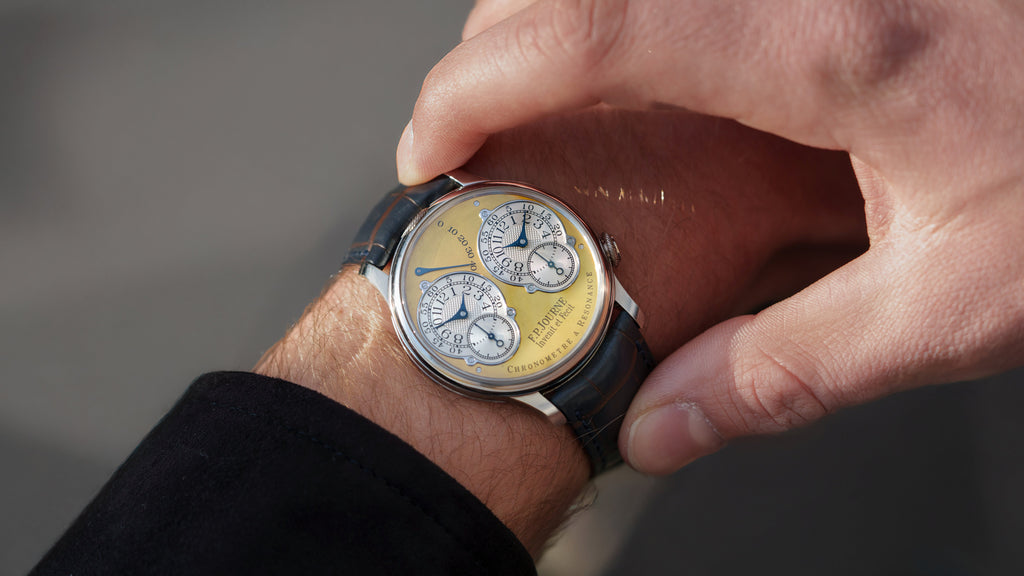
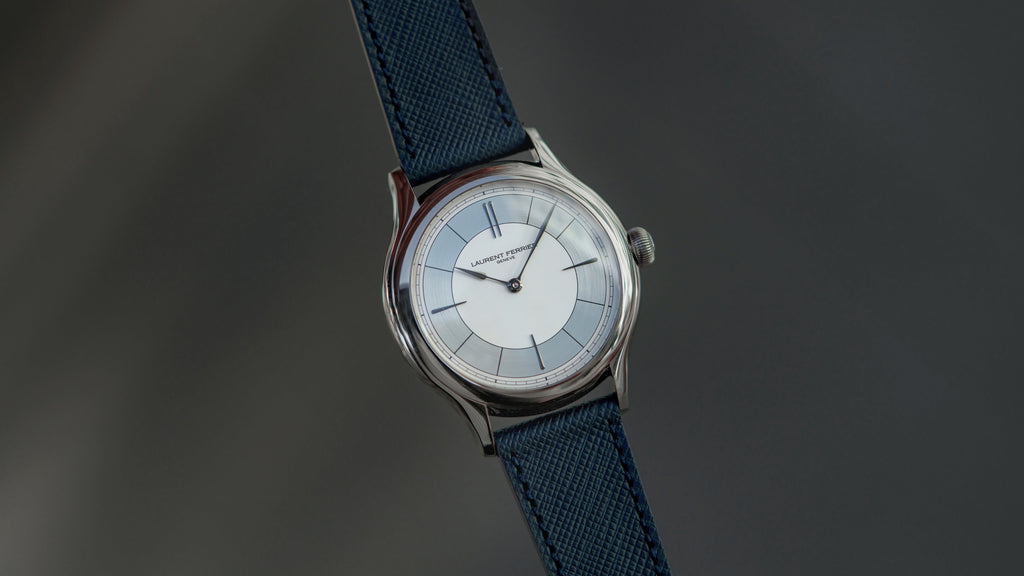

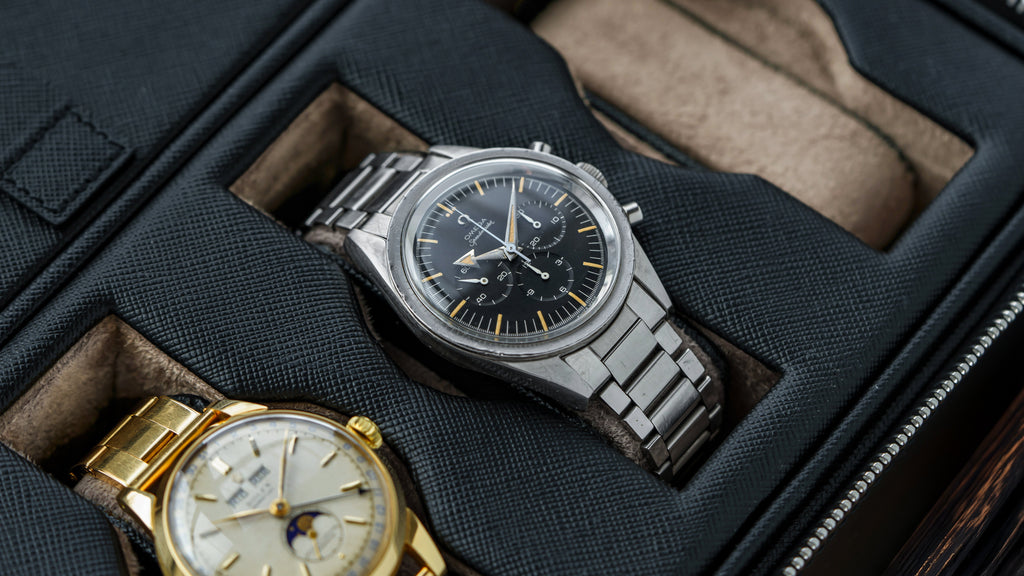
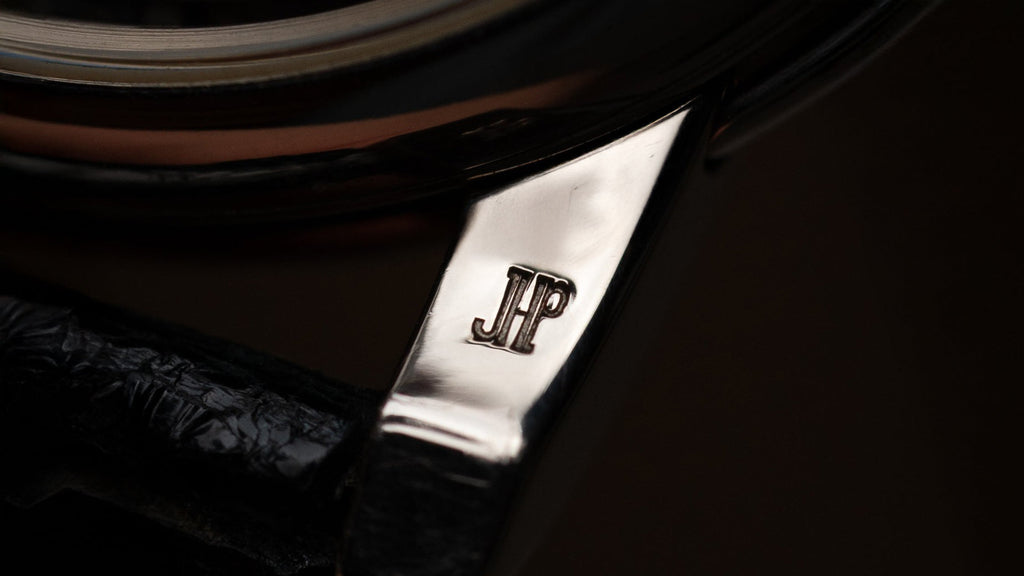
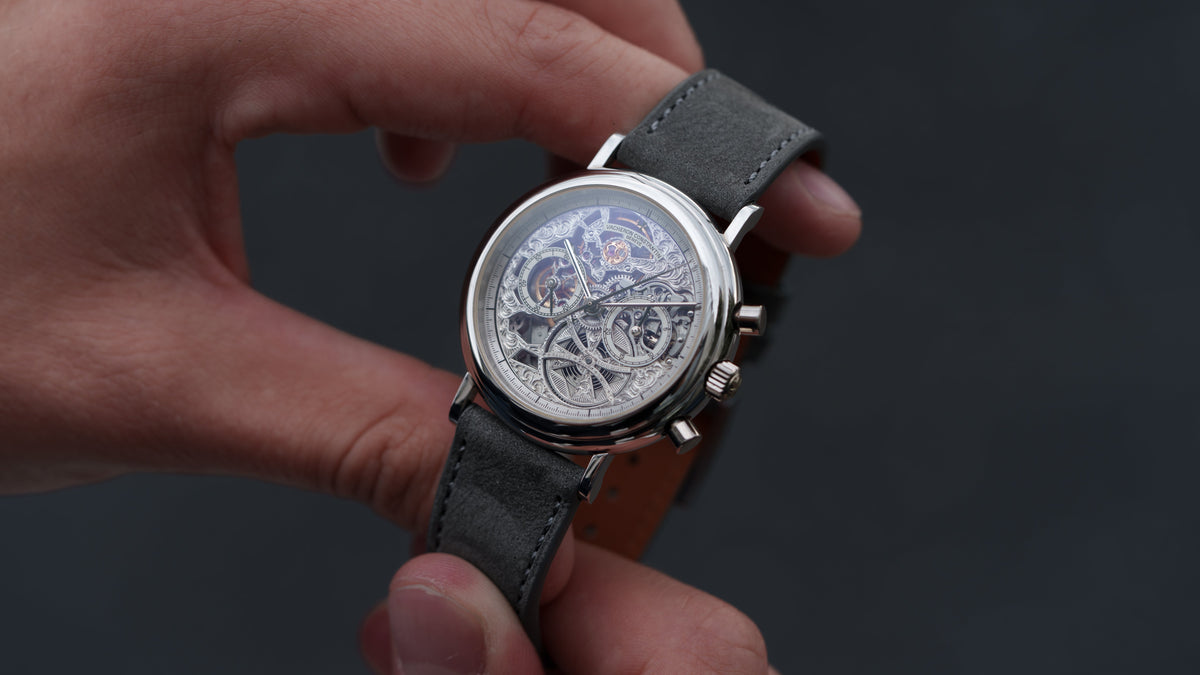
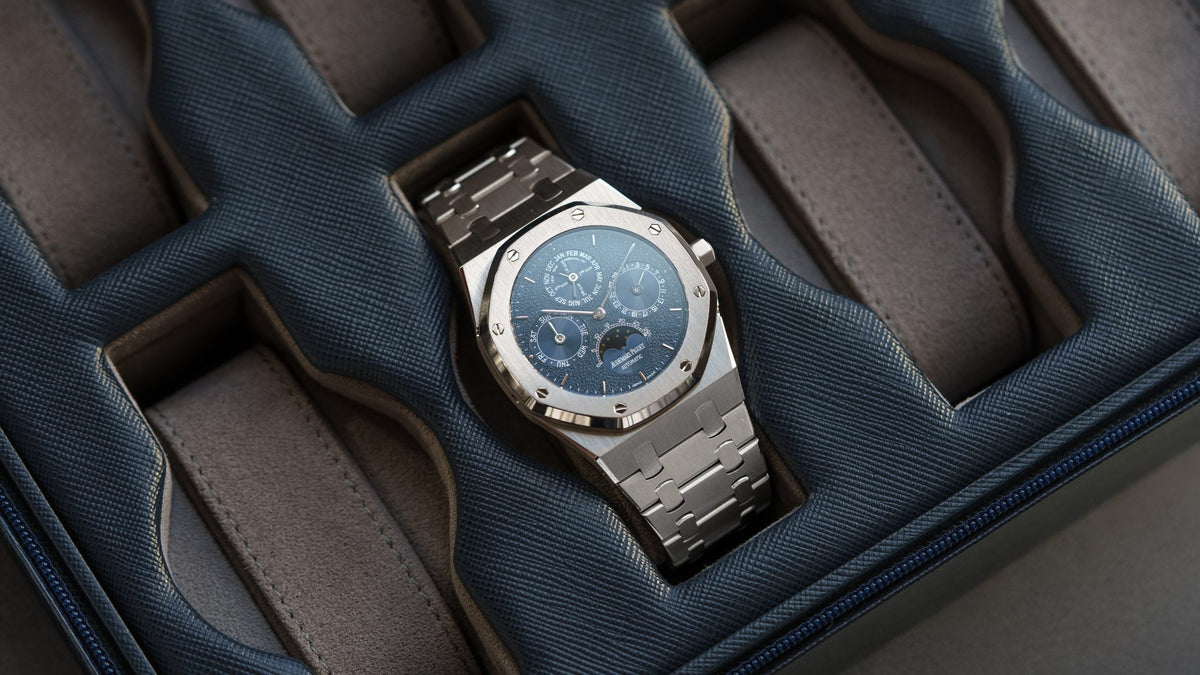
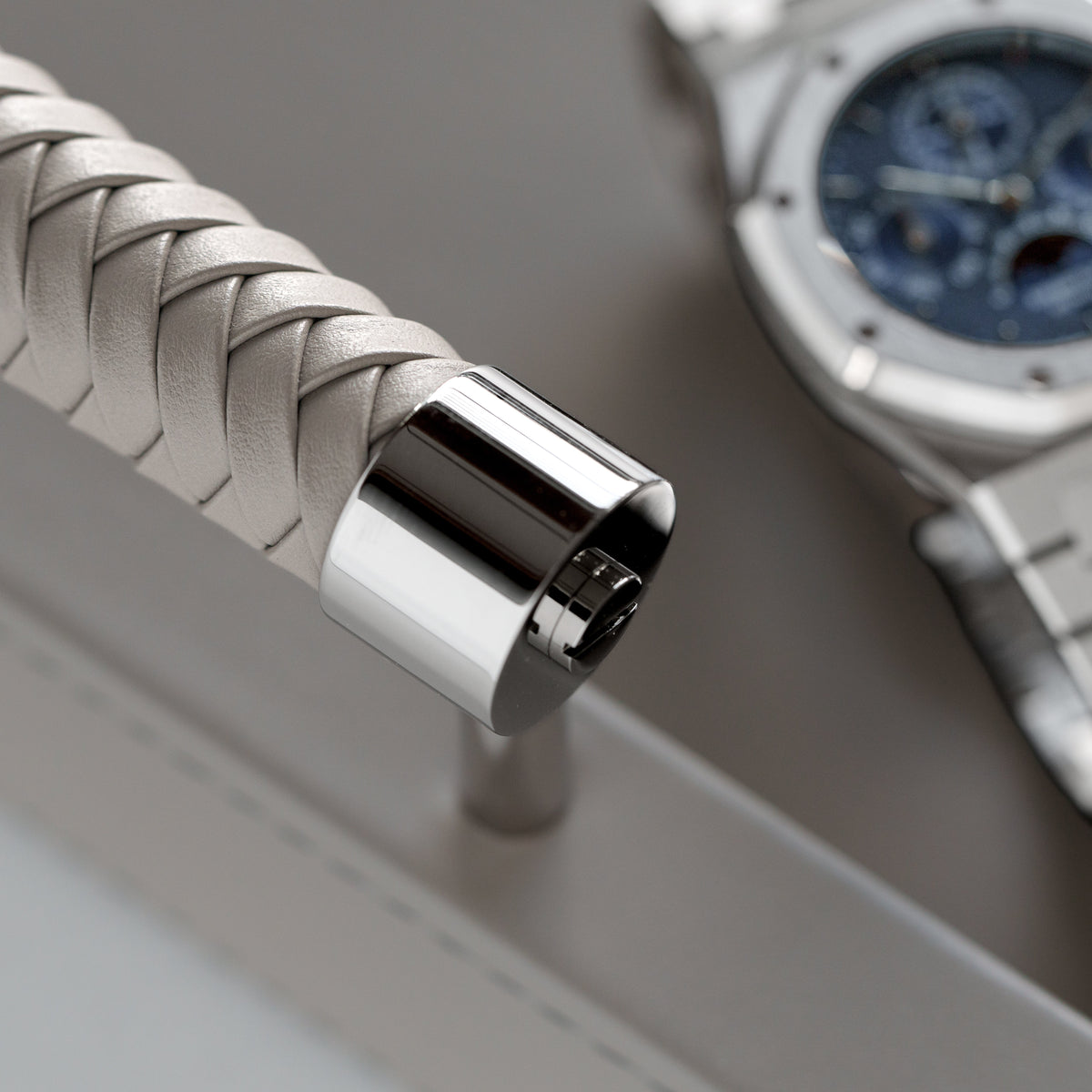
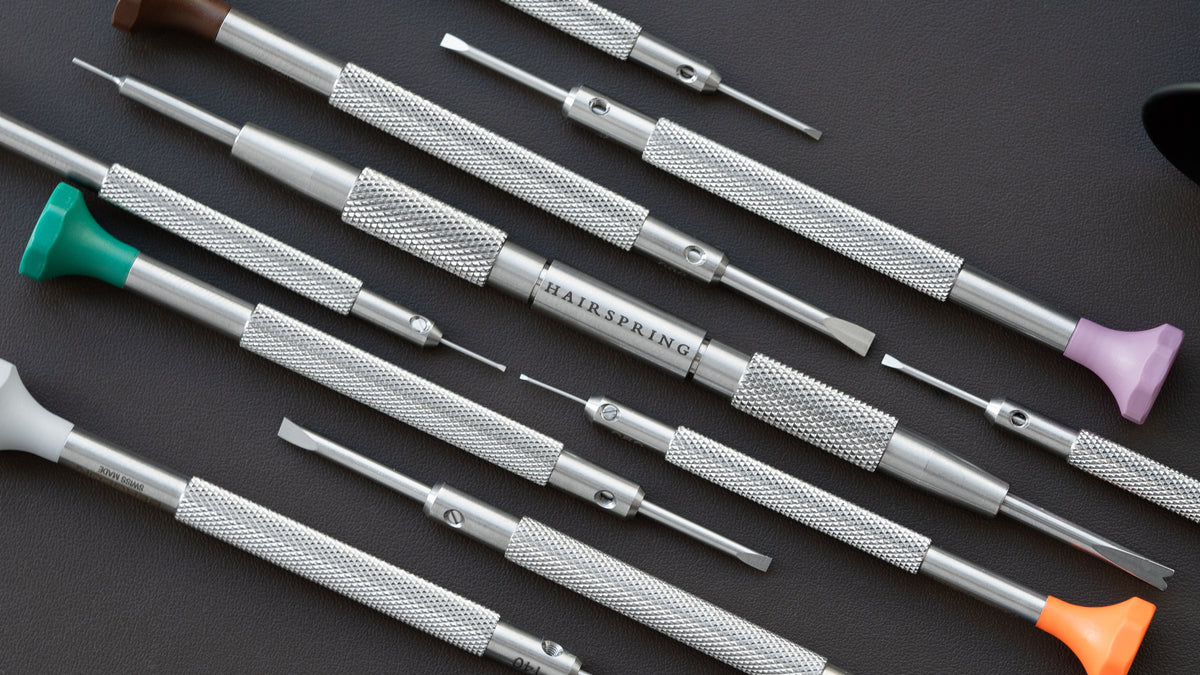
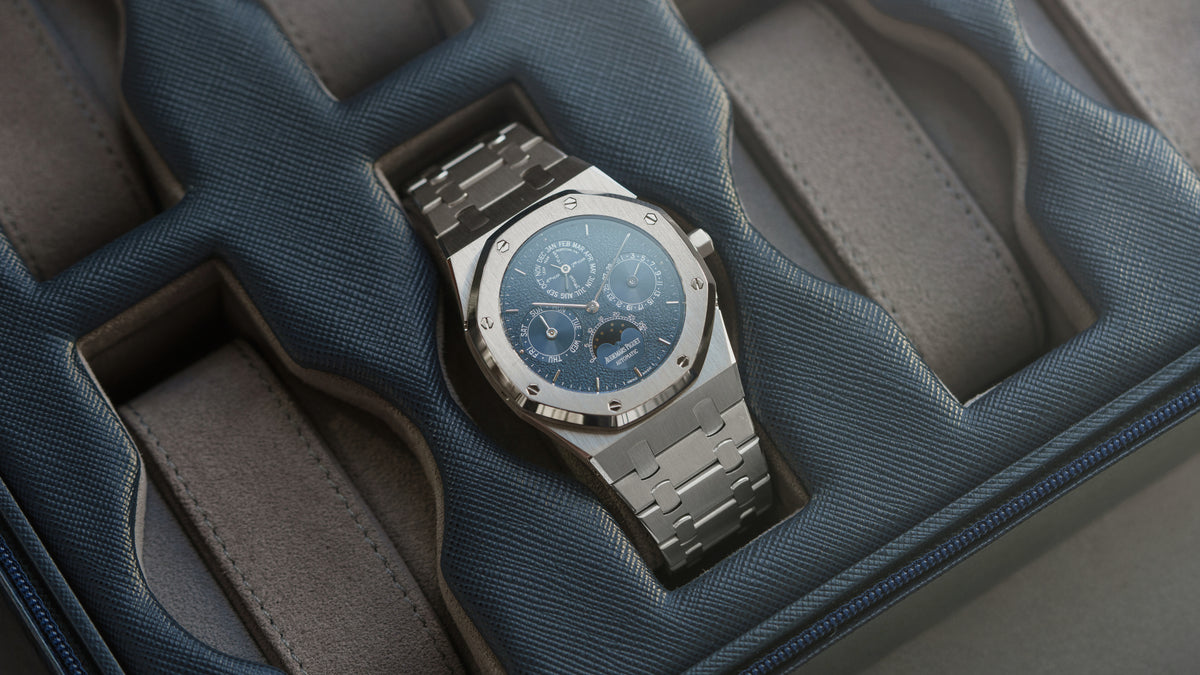
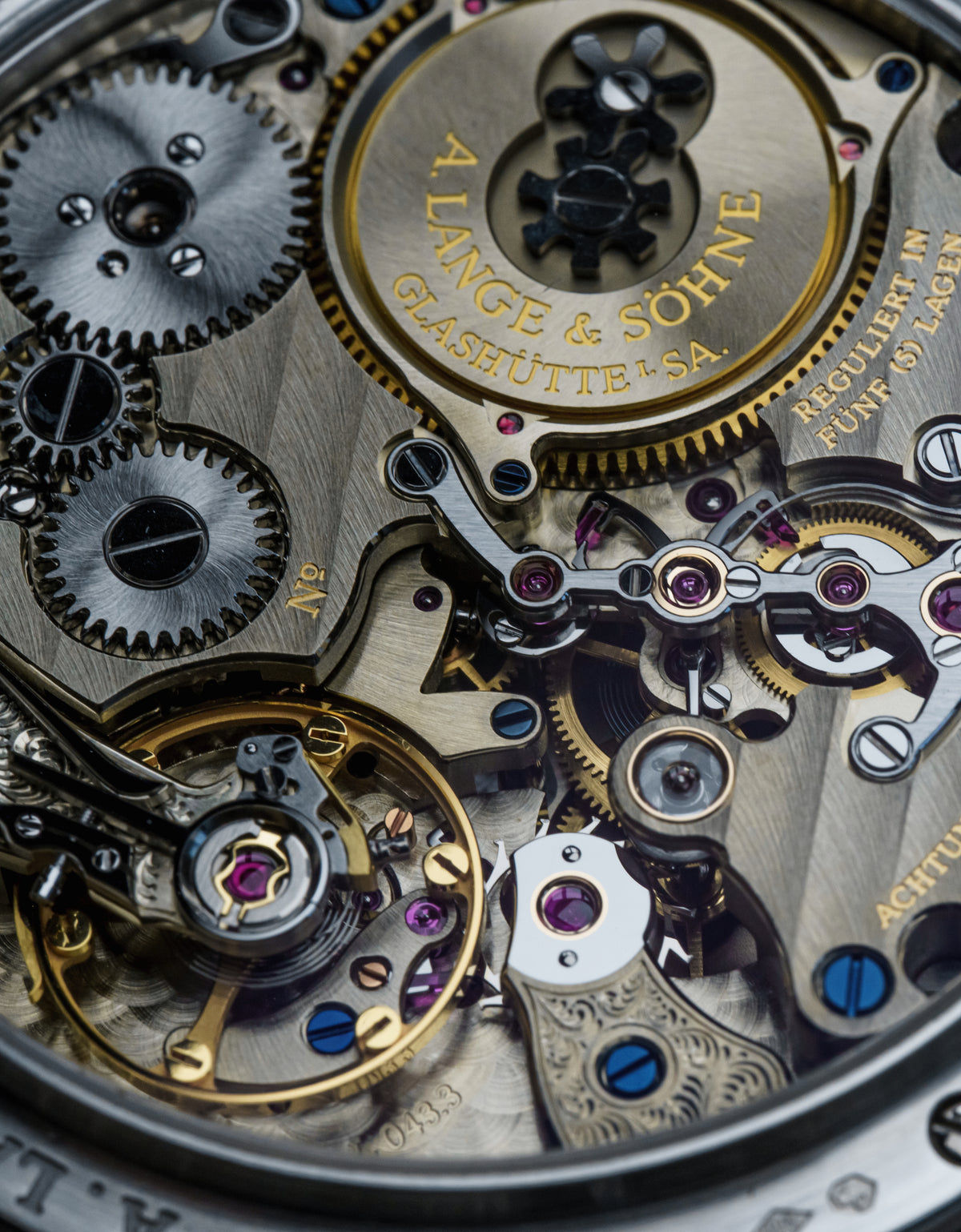

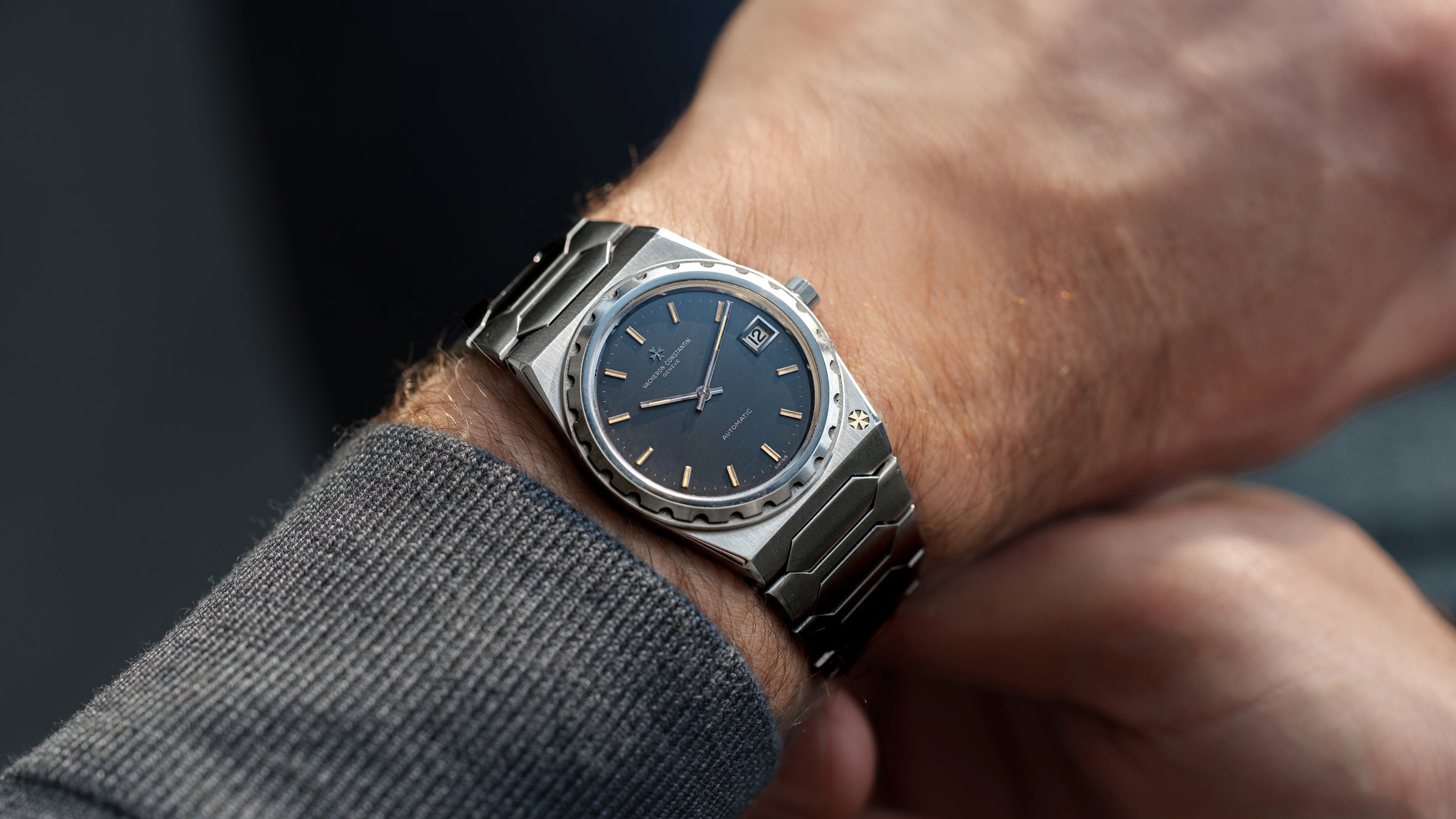
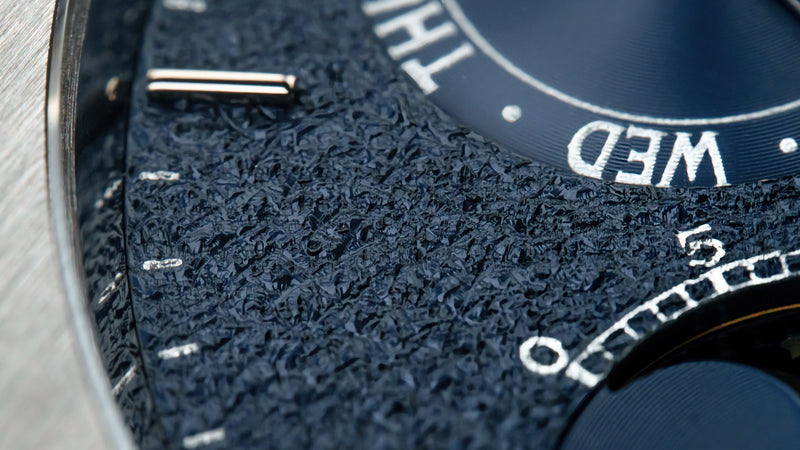

0 comments
Write a Comment